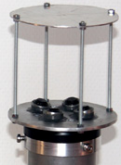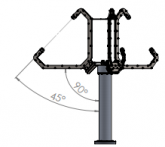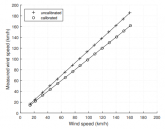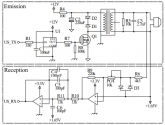That's a bit brain bending.... dang! Is this because pressure itself is logarithmic?
No, it's just how accuracies are expressed regardless of the sensor they apply to
The datasheet of the $100 sensor says the max error is .2% FS (full scale) where FS is 3500 Pa and 1.5% of the measured value (reading).
So, you're right I was taking .2% of the full scale and applying it at the bottom.
So, the accuracy error accumulates as the voltage goes up..., that is at 0 mV when there's no wind so 0% error?
At the max reading that's the max error (.2% of 3500 Pa)?
Saying 0.2 % FS for a 3500 Pa sensor is the same as saying 7 Pa. So the total error can be expressed as 1.5 % + 7 Pa. For example if you measure 200 Pa then you can have a max error of 10 Pa (1.5 % * 200 + 7).
At 0 Pa real the 1.5 % error disappear but you still have the 7 Pa error.
Usually the base offset can be calibrated and never changes much so you only deal with linearity error.
BTW 3500 Pa is a bit much so I'd recommend a 1500 or 2000 Pa one, and you can find sensors with a better accuracy, both of which will give you better results.
I'm concerned that it would cost more to buy a signal generator and an o-scope than it would be replacement parts.
No need of a sig gen, just toggle a arduino pin at 40 kHz











